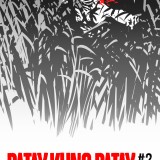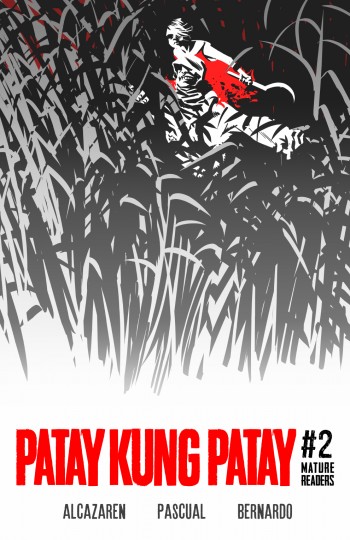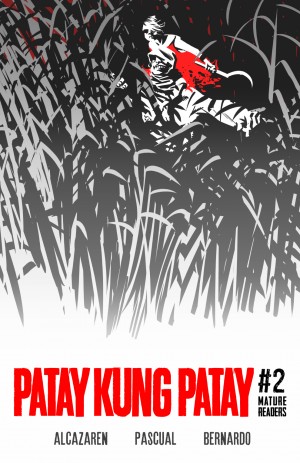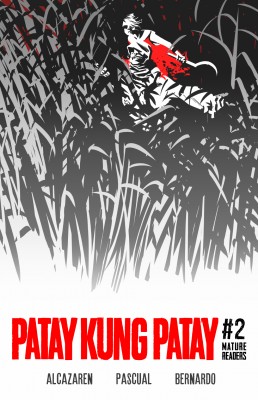
COMIC BOOK REVIEW: Patay Kung Patay #2
UNMASKING THE ELITE! Mike Alcazaren, Noel Pascual and AJ Bernando continue their respective brilliances in their continue search of true social justice via the medium of graphic illustration in the exciting second chapter of PATAY KUNG PATAY. From start to finish, this one is white hot in every artistic and narrative department. No page is […]
Mike Alcazaren, Noel Pascual and AJ Bernando continue their respective brilliances in their continue search of true social justice via the medium of graphic illustration in the exciting second chapter of PATAY KUNG PATAY. From start to finish, this one is white hot in every artistic and narrative department. No page is either dull or even decent, but excellent in execution, well-thought and crafted script, and a true embodiment of artistic collaboration so rare in the comic industry. Patay Kung Patay #2 is a true comic gem!
Similar with the premier chapter, the opening pages illustrate the true motive of the creative teams’ familial antagonist—remaining on top of the socio-economic-cultural-political Philippine food chain. Alcazaren and Pascual highlight some Philippine historical references to clearly support this open secret psychological and collective mind frame of the elites, namely from the ruling principalia and later on, the ilustrados during the three centuries of Spanish colonial rule, up to the collaboration of the educated castes during the American occupation, which highlighted the creation of the monolithic institutionalization of the local elites in the political, economic and social realms that still persist to the postmodern times. Moreover, the reckoning of the long oppressed and subjugated peripheries is once again analogized in our Philippine history of struggles of the peasantry, starting from the Philippine Revolution of 1896 (the so-called “Revolt of the Masses”, courtesy by Teodoro A. Agoncillo), up to the “rebellion” (the book’s term in the usual belittlement of the ruling intelligentsias) during the first years of American regime in the first decade of the 20th century (or now officially called as Filipino-American or Fil-Am War). Moreover, the present conflict has the reminiscing effects from the brutal treatment of the landlords or hacienderos to their poor tenants in Central Luzon in the 1920 and 1930s, up to the late 1940s to 1950s (the Hukbalahap rebellion), which the former called the services of the Philippine Constabulary (the precursor of the Philippine National Police) to conduct surveillance and even quash potential and actual farmers’ and tenancy uprisings. PKP #2 brims with these historical references and the corresponding connectivity, which the storytellers hit the proverbial nails on the coffin with brilliant precision as usual.
Since the characters are already introduced in the introductory issue, this time around centers more on the plot and the overall direction that truly showcases the narrators’ almost absolute mastery of cadence, placing, turning, the tension, and most significantly, the excellent dialogues and interactions between the casts involved right now. Neither lines nor onomatopoeia are boring or even clichés, just plain but natural, to the extent of hearing their voices and the sound effects in our minds so real while reading this well-balanced but high octane chapter. The exchanges of the rich members of the high echelons are definitely oozing with the coño attributes that are the signifiers of the linguistic divides of the Hegelian master-slave relationship. Even the so-called modern terminologies (to be bluntly here, euphemisms) uttered by these clannish scions are well-placed, not forced and well-contextually projected the sense of masquerading the obvious: the continuing oppression of the top species of Philippine socio-economic spheres. Noel Pascual’s scripts and the breakdowns are even more powerful in delivering the full impact of this issue’s overall message and other openly critical potshots for the co-creator’s contributions are essentially well-distributed all throughout. Even the most exciting parts are not overblown, but thoroughly crafted to maintain this kind of consistency of seriousness, littering critical and social commentaries and criticisms, and the fast-pacing but bloody moments in the riveting last arc that smoothly teases readers for more PKP chapters to come, and more so, transitions to the next and potentially third explosive chapter that proves of the kind of excellence in the narrative delivery of the PKP creative team, most particularly Pascual’s. Henceforth, PKP as a narrative is without a shadow of doubt equates its worthiness and continuing the relevance of social change in the comic medium.
But naturally, the true heavyweight in this great second issue is no other than AJ Bernando’s continuing awesome illustrations and his equally mastery of the utilization of the three color schemes that are currently unmatched, if not unparalleled or even unsurpassed, by present-day comic book coloring paradigm. As said previously, Bernando either matches or surpasses the script’s initial trajectory by exceeding the artistic projections of the human emotional portrayals and easily avoiding the obvious trappings of lazy illustrative tactics seen nowadays. The sequential paneling is outstandingly executed, even with some peculiar angular projections, but nonetheless accessibly easy to follow. His illustrations of the interiors and the breathtaking sceneries of the hacienda are simply astonishing to mesmerize and the details are undeniably taken into considerations to prove the artist’s commitment of making PKP not only a socio-political-cultural commentary but a visual quasi-masterpiece to mesmerize. Furthermore, his facial projections are in synchronization with the stark realisms of exploitation, oppression, and the outright display of affluence, debauchery, and of course, power. Significantly, the artist’s application of the red color is another artistic concept he fully maximizes that eventually becomes the unsung or silent abstract characterization of the entire series itself. Red is highlight and even the most mundane places display Bernando’s extent of his current artistic sequential repertoire in demonstrating how this color transforms and projects stuffs like the red sky, the red logos, the red hair, the red dress, and the red sash as the signifying forces that influence the overall direction of the story, and consequently, the awesomeness of PKP.
If only everyone is as open-minded and fully aware of the responsibilities we must perform to the society. However, PKP #2 may definitely turnoff some sensitive and narrow-minded types who may actually be guilty on their supposed Olympian mentality to the current problems then and now. As mentioned earlier, the continuing existence of the socio-economic status quo is virtually unchangeable, though technological and external forces change the exteriors and some cultural practices, but the innate mentality of the few remains, and the potentiality of the upcoming reckoning of the peripherals can be seen as the writing of the wall if not taken considerations at all. Perhaps, the PKP creative team wants peaceful aims and reforms, similar to Jose Rizal’s reformist outlook. But, the comics are the outlets of visual representations of our societies, past and the present. PKP achieves that objective, seriously speaking. And for obvious reasons, gores, sensitive themes and extreme violence are present that makes PKP as a whole a well-deserving “mature” (duh) reading.
Regardless, Patay Kung Patay #2 continues the excellent consistency of the brilliant minds behind this on-going series, most particularly the historical references that unmasks the elite’s true motivations, and the ever increasingly mastery of color application of AJ Bernando. And, if my BAYAW is still alive and kicking (ok, expect the unexpected, I must admit), I am definitely going to invest heavily with this series for it is almost PERFECT in many artistic and narrative levels. I even hypothesize that if ever Che Guevara is still alive and kicking, he would say, “Patay Kung Patay is definitely a HIGHLY RECOMMENDED visual literary opus!”
Patay Kung Patay #2 will be released this November 2015!
















